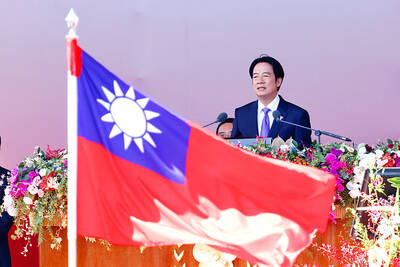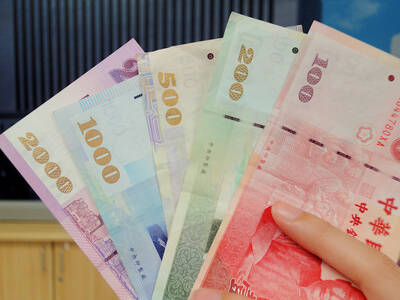The global economy likely will contract next year for the first time in decades in a “severe” recession as the credit crunch bites, an international banking group said on Thursday.
The Institute of International Finance (IIF), the Washington-based association representing more than 375 of the world’s major banks and financial institutions, projected the world economy would shrink 0.4 percent next year after 2.0 percent growth this year.
Charles Dallara, the managing director of the IIF, called it “the most severe, globally synchronized recession in modern economic history.”
The global crisis requires a global coordinated response, he said at a news conference.
Dallara said the economy was mired in a negative feedback loop of weakening economic activity and intense financial market strains.
“You’ll see much more bang for the buck” with a coordinated response, he said, hailing US government monetary and fiscal efforts to unblock credit and stimulate growth.
“It will be important that these measures be complemented in Europe and in Japan,” he said.
In a grim assessment, the IIF said in its monthly Global Economic Monitor report: “It should be emphasized that an overall contraction in the global economy is a truly weak outcome, and the first time this has happened in the post-1960 period.”
Philip Suttle, the IIF macroeconomic analysis director, said that data as far back as the early 1950s do not show a contraction in the world economy.
Mature economies — the US, the 15-nation eurozone and Japan — that are now in recession were forecast to contract a hefty 1.4 percent amid the worst financial crisis since the Great Depression.
Growth in those economies was seen at a mere 0.9 percent this year as the global credit crunch that began in the middle of last year exploded in September with the collapse of Wall Street investment bank Lehman Brothers.
The US economy, the world’s largest and the epicenter of the financial tsunami, would shrink 1.3 percent next year after growth of 1.2 percent this year, the IIF projections showed.
The eurozone would contract more sharply, by 1.5 percent from 0.9 percent growth, and Japan would shrink 1.2 percent after zero growth.
The sharpest markdown was for the emerging economies, including powerhouses China, India, Brazil and Russia.
Those engines of global growth had resisted the impact of the credit crunch gripping the advanced economies until the mid-September financial firestorm, the IIF said.
The IIF forecasted economic growth in emerging markets would brake to 3.1 percent next year after a 5.9 percent gain this year.
“Emerging Asian growth has slowed sharply, but should hold up better than in other regions,” it said.
China’s growth would drop to 6.5 percent next year from 9.3 percent this year and 11.9 percent last year, while India’s deceleration would be less steep, to 5.0 percent from 6.2 percent.
The IIF said “particularly weak growth” was forecast for central, eastern and southern Europe, with economic output of just 0.3 percent likely for next year after 4.5 percent this year.
Since the start of last year, the reported losses at financial institutions has topped US$1 trillion, the IIF said. Institutions have raised about US$930 billion since the middle of last year, with more than one-third coming from the public sector.
Hung Tran, head of the IIF’s capital markets and emerging market policy department, warned that those losses would increase amid the economic slowdown.
“The weakening economy will increase credit losses, continuing to put pressure on bank capital. This underscores the point that capital injection alone will not be sufficient to strengthen the banking system until the economy and financial markets stabilize,” Tran said.

People can preregister to receive their NT$10,000 (US$325) cash distributed from the central government on Nov. 5 after President William Lai (賴清德) yesterday signed the Special Budget for Strengthening Economic, Social and National Security Resilience, the Executive Yuan told a news conference last night. The special budget, passed by the Legislative Yuan on Friday last week with a cash handout budget of NT$236 billion, was officially submitted to the Executive Yuan and the Presidential Office yesterday afternoon. People can register through the official Web site at https://10000.gov.tw to have the funds deposited into their bank accounts, withdraw the funds at automated teller

PEACE AND STABILITY: Maintaining the cross-strait ‘status quo’ has long been the government’s position, the Ministry of Foreign Affairs said Taiwan is committed to maintaining the cross-strait “status quo” and seeks no escalation of tensions, the Ministry of Foreign Affairs (MOFA) said yesterday, rebutting a Time magazine opinion piece that described President William Lai (賴清德) as a “reckless leader.” The article, titled “The US Must Beware of Taiwan’s Reckless Leader,” was written by Lyle Goldstein, director of the Asia Program at the Washington-based Defense Priorities think tank. Goldstein wrote that Taiwan is “the world’s most dangerous flashpoint” amid ongoing conflicts in the Middle East and Russia’s invasion of Ukraine. He said that the situation in the Taiwan Strait has become less stable

REASSURANCE: The US said Taiwan’s interests would not be harmed during the talk and that it remains steadfast in its support for the nation, the foreign minister said US President Donald Trump on Friday said he would bring up Taiwan with Chinese President Xi Jinping (習近平) during a meeting on the sidelines of the APEC Summit in South Korea this week. “I will be talking about Taiwan [with Xi],” Trump told reporters before he departed for his trip to Asia, adding that he had “a lot of respect for Taiwan.” “We have a lot to talk about with President Xi, and he has a lot to talk about with us. I think we’ll have a good meeting,” Trump said. Taiwan has long been a contentious issue between the US and China.

FRESH LOOK: A committee would gather expert and public input on the themes and visual motifs that would appear on the notes, the central bank governor said The central bank has launched a comprehensive redesign of New Taiwan dollar banknotes to enhance anti-counterfeiting measures, improve accessibility and align the bills with global sustainability standards, Governor Yang Chin-long (楊金龍) told a meeting of the legislature’s Finance Committee yesterday. The overhaul would affect all five denominations — NT$100, NT$200, NT$500, NT$1,000 and NT$2,000 notes — but not coins, Yang said. It would be the first major update to the banknotes in 24 years, as the current series, introduced in 2001, has remained in circulation amid rapid advances in printing technology and security standards. “Updating the notes is essential to safeguard the integrity